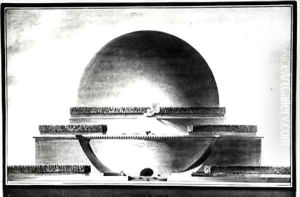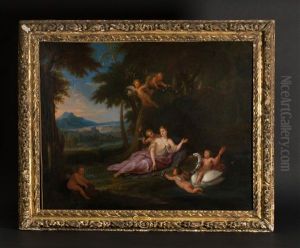Etienne Louis Boullee Paintings
Étienne-Louis Boullée was a visionary French architect, whose work greatly influenced modern architecture and what is often referred to as revolutionary, neoclassical architecture. Born on February 12, 1728, in Paris, France, Boullée is best known for his theoretical projects, which were never built but were highly imaginative and influential among architects and scholars. His designs were characterized by grandiose scale and the dramatic effect of light and shadow, embodying the ideals of the Enlightenment and the aesthetic principles of neoclassicism.
Boullée's architectural career was marked by a fascination with geometry, proportion, and the emotional impact of architectural spaces. He was a contemporary of other notable architects and theorists such as Claude Nicolas Ledoux and Jean-Jacques Lequeu, with whom he shared the vision of architecture as a means to express the sublime. One of his most famous designs is the 'Cenotaph for Newton' (1784), a massive spherical monument dedicated to the English scientist Sir Isaac Newton, intended to embody the spirit of scientific discovery and enlightenment. The cenotaph was designed as a hollow sphere with a diameter of 150 meters, symbolizing the universe, with holes in the surface to mimic the effect of starlight, creating a celestial atmosphere inside.
Despite his influential ideas, Boullée spent much of his career as an educator, teaching at the École Nationale Supérieure des Beaux-Arts in Paris. His theoretical work was compiled in his treatise 'Architecture, essai sur l'art', which was not published until the 20th century. This treatise elaborates on his architectural philosophy, including his belief in the importance of emotion in architecture, which he referred to as the 'art to move'. Boullée's emphasis on monumental simplicity and the emotional impact of architectural forms has had a lasting effect on the development of modern architecture, influencing architects such as Le Corbusier and Louis Kahn.
Étienne-Louis Boullée died on February 4, 1799, in Paris. Although none of his grand projects were realized, his visionary drawings and writings remain a testament to his genius, offering insight into an architecture that transcends practicality to touch the realms of the philosophical and the sublime. His work continues to be studied and admired for its bold ideas and its contribution to the evolution of architectural thought.

